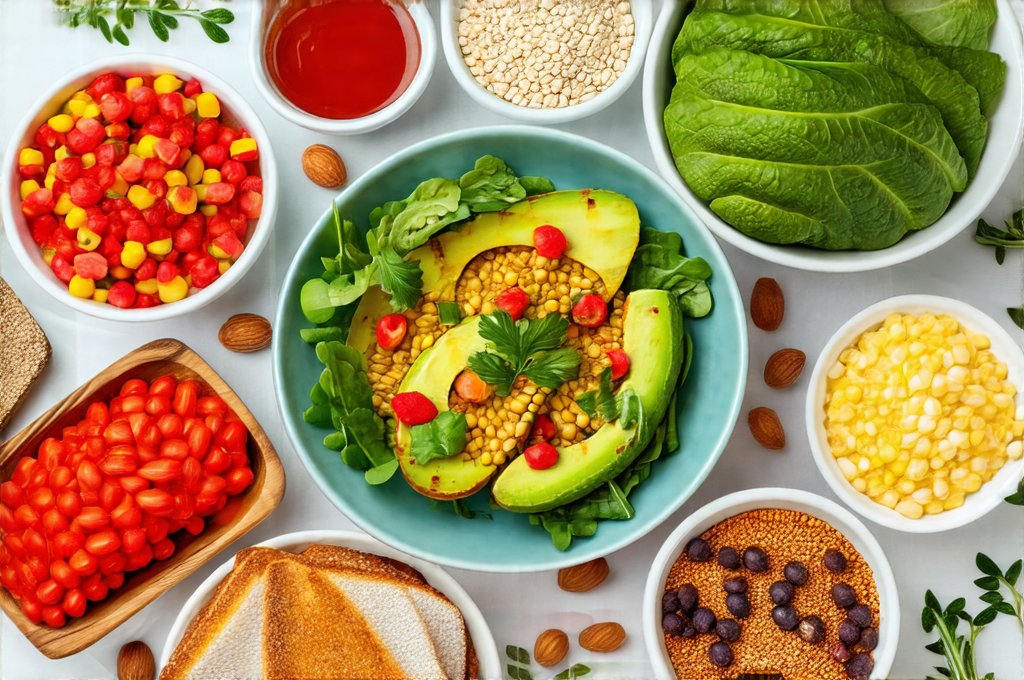The digestive system is often an overlooked component of overall wellbeing, yet it profoundly impacts energy levels, nutrient absorption, mood, and even immune function. Many modern diets are incredibly high in fiber – often unintentionally so – which, while generally beneficial for many, can become problematic when the gut is already stressed or needs a period of rest. An “active digestive reset” isn’t about eliminating fiber forever; it’s about strategically reducing intake temporarily to allow the digestive tract to heal and rebuild its natural rhythm. This approach focuses on gentle nourishment while minimizing strain, offering relief from symptoms like bloating, gas, abdominal pain, or inconsistent bowel movements. It’s a period of mindful eating focused on easily digestible foods.
This reset isn’t necessarily about diagnosing a specific condition; it’s more about proactively supporting gut health and giving your system a chance to recover from dietary excess, stress, or periods of intense activity. The goal is to reduce the workload on the digestive system so that it can repair its lining, rebalance gut flora (with appropriate support), and improve overall functionality. A low-fiber approach, when implemented thoughtfully, can be an effective way to calm a sensitive digestive system and create space for long-term gut health improvements. Remember, this is about temporary modification; the eventual goal is usually to reintroduce fiber gradually in a way that’s comfortable and sustainable. You might even find it beneficial to explore regular fasting help during this time, if appropriate for you.
Understanding Low-Fiber Eating & The Reset Process
Low-fiber eating isn’t the same as a zero-fiber diet. It doesn’t mean completely eliminating fruits, vegetables or whole grains. Instead, it focuses on selecting versions of these foods that are easier to digest and reducing overall quantity. The key is to prioritize white rice over brown, peeled applesauce over raw apples, and well-cooked vegetables over raw ones. The aim isn’t deprivation, but rather mindful selection and portion control. A truly effective reset also incorporates other supportive practices like stress management techniques (meditation, yoga), adequate hydration, and sufficient sleep – all of which play crucial roles in digestive health. Considering hydration strategies is especially important for sensitive systems.
The “active” part of an active digestive reset is vital. It’s not about passively restricting food; it’s about actively supporting the healing process through gentle movement, mindful eating practices, and potentially incorporating gut-healing supplements (under professional guidance). This can include light walking, restorative yoga, or even simply taking a few deep breaths before each meal to promote relaxation and optimal digestion. It’s also about paying close attention to your body’s signals – recognizing which foods are well tolerated and adjusting accordingly. You might find rest days beneficial during this process as well, allowing for deeper healing.
A typical reset period might last anywhere from 2-6 weeks, depending on individual needs and symptom severity. It is crucially important to listen to your body throughout the process. Don’t push yourself if you experience discomfort or worsening symptoms. If you have underlying health conditions or are experiencing significant digestive distress, consult with a healthcare professional before implementing any dietary changes. This is especially relevant for individuals with pre-existing medical conditions such as Crohn’s disease, ulcerative colitis, or irritable bowel syndrome. It’s also wise to consider if meal replacements might be detrimental during this sensitive time.
Low-Fiber Meal Ideas – Building A Gentle Menu
Creating low-fiber meals doesn’t have to be restrictive or boring. The focus should be on nutrient density within the parameters of easy digestibility. Breakfast can include options like well-cooked oatmeal (made with water), scrambled eggs, or a smoothie made with peeled fruits and lactose-free yogurt. Lunch might consist of grilled chicken with white rice and steamed carrots, or a turkey sandwich on white bread with lettuce and mayonnaise. Dinner could feature baked salmon with mashed potatoes and green beans (peeled).
Snacks can be equally simple: banana, rice cakes with a thin spread of nut butter, or lactose-free yogurt. The key is to avoid foods that are known to trigger digestive upset. This includes – but isn’t limited to – raw vegetables, whole grains, legumes, nuts, seeds, and highly processed foods. Remember portion control is also important; even easily digestible foods can cause discomfort if consumed in excessive amounts. Hydration remains paramount throughout the reset period, with water being the beverage of choice. Herbal teas like chamomile or ginger can also be soothing. If you are preparing meals for children, simple dinner ideas might provide further inspiration.
Breakfast Options for a Calm Start
- Oatmeal (made with water) – use quick cooking oats and cook thoroughly. Avoid adding seeds, nuts, or dried fruit initially.
- Scrambled Eggs – cooked in olive oil or coconut oil. Consider pairing with a small portion of white toast.
- Smoothies – use peeled banana, lactose-free yogurt, and a small amount of spinach (if tolerated). Avoid berries and other high-fiber fruits.
- White Rice Porridge – A comforting option, especially if you’re feeling nauseous or have lost your appetite. Season with a pinch of salt.
A gentle breakfast sets the tone for the day. Avoid rushing through your meal; take time to savor each bite and focus on mindful eating. This helps stimulate digestive enzymes and promotes optimal digestion. Preparing breakfast the night before can also reduce stress in the morning, allowing you to start your day calmly and peacefully. It’s important to remember that even seemingly benign foods can cause issues for some individuals during a reset; pay attention to how you feel after eating different options.
Lunchtime Solutions – Light & Nourishing
- Grilled Chicken or Turkey – served with white rice and steamed vegetables (carrots, zucchini).
- Fish (salmon, cod) – baked or poached, accompanied by mashed potatoes and a small portion of cooked green beans.
- Soup – broth-based soups made with well-cooked vegetables are generally easy to digest. Avoid lentil or bean-heavy soups.
- Turkey Sandwich – on white bread with lettuce and mayonnaise (avoid mustard and other strong condiments).
Lunch should be light, nourishing, and easily digestible. Avoid large portions, as this can overwhelm the digestive system. Focus on lean protein sources and well-cooked vegetables. If you’re dining out, choose simple options and ask for modifications if necessary – for example, requesting steamed vegetables instead of a salad. Don’t be afraid to advocate for your dietary needs.
Dinner – Gentle & Restorative
- Baked Chicken Breast – with mashed sweet potatoes (peeled) and well-cooked asparagus.
- Ground Turkey Stir-Fry – using white rice noodles and low-fiber vegetables like zucchini and carrots, seasoned with soy sauce or tamari. Avoid adding nuts or seeds.
- Shepherd’s Pie – made with ground lamb or beef, mashed potatoes (peeled), and a small amount of well-cooked carrots and peas.
- Pasta – White pasta with a simple tomato sauce (without added fiber) and cooked zucchini.
Dinner should be the lightest meal of the day, allowing your digestive system to rest overnight. Avoid eating too close to bedtime. Focus on easily digestible protein sources and complex carbohydrates that won’t spike blood sugar levels. Incorporate herbs and spices for flavor, but avoid overly spicy or stimulating ingredients. Remember that a gentle dinner promotes restful sleep and supports optimal digestion. If you are preparing meals for children with digestive issues, meal planning can be particularly helpful.
It is important to reiterate: this information is not intended as medical advice and should not be used as a substitute for professional consultation with a qualified healthcare provider. If you’re considering a low-salicylate diet, explore meal ideas to help guide your choices.


















